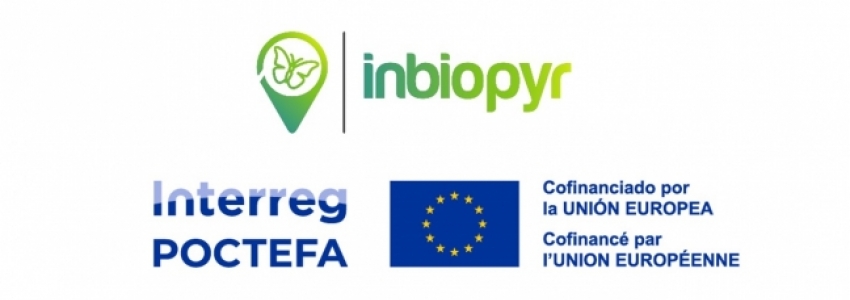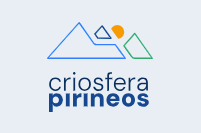Background
The generation of indicators to assess the impact of climate change (CC) on the natural values of the Pyrenees is essential for designing effective adaptation and mitigation measures. Although progress has been made at the massif level in areas such as water resources, snow, forests and flora, there is still a significant gap in the field of fauna.The FAUNAPYR project made it possible for the first time to compile and visualise, in a single portal, a joint database of fauna records throughout the massif.
Now, BIOINPYR is taking a step forward by using this information to develop indicators that link spatial and temporal changes in fauna distribution with the effects of CC. This initiative contributes to Priority 2 of the Programme by promoting adaptation to CC through key tools for assessing the conservation status of fauna and the effectiveness of the strategies implemented.In addition, the project promotes improvements in data collection through a comprehensive training strategy and the development of a cross-border guide to ensure standardised, long-term monitoring of multiple taxa throughout the Pyrenean bioregion. The project consortium seeks territorial and technical balance, integrating experts in biodiversity data management, species monitoring, training, CC monitoring and knowledge transfer to the competent authorities.
Project objectives and actions
The overall objective of the INBIOPYR project is to promote adaptation to climate change by generating indicators that are essential for assessing the conservation status of fauna in the massif and the effectiveness of climate change adaptation and mitigation measures.
Strategic Objective 1
Improvement of cross-border monitoring of sentinel wildlife species in the Pyrenees (Action 3; Actions 1 and 2 refer to project management and communication, respectively).
INBIOPYR starts from a state of the art in which there is no cross-border guide that guarantees common minimums in terms of spatial, temporal and taxonomic coverage of Pyrenean fauna from a massif perspective. The project does not aim to create a new guide outside the existing regional or national monitoring programmes, but rather to compile all the available information and draw up a guide that brings together the minimum methodological requirements to ensure sufficient sampling of sentinel fauna species with which to generate the indicators set out in Action 4 of this project.
Strategic Objective 2
Generation of indicators on ecological parameters of fauna species sensitive to climate change and promotion of the use of fauna data in initiatives aimed at monitoring climate change in the Pyrenees (Action 4).
Action 4 will be aimed at generating indicators of change in the spatial and temporal distribution and abundance of fauna in the Pyrenees (e.g., population changes, community thermal indices, average altitude, dates of passage or arrival in the case of migratory birds, reproductive phenology, number of 10x10 UTM cells occupied by a species, etc.). to assess the impact of climate change and landscape changes on biodiversity in the CTP area. These indicators will be generated from data collected in general monitoring programmes, common bird monitoring and wildlife sightings compiled at the massif scale (FAUNAPYR portal), as well as from other species monitoring databases that may exist. This Action, led by the ICO, will involve partners with experience in calculating these indicators: Aranzadi, LPO, OPCC, Natureo.
The Action will be organised into three lines of work: 1) Indicators of change in bird populations and thermal indices in communities will be developed in accordance with international standards established by the EBCC and other international organisations with the aim of ensuring the comparability of these indicators with values obtained at other geographical scales. To this end, the EBCC will be urged to mobilise monitoring data from both sides of the mountain range and integrate them to develop multi-species indicators of proven consistency; 2) In addition, the use of bird indicator models in other taxonomic groups with long-term monitoring will be explored, following the indicator model developed in the Living Planet Index. To this end, researchers/entities responsible for monitoring other groups of organisms (e.g. mammals, butterflies) will be contacted and encouraged to share data that will enable the development of indicators similar to those developed for birds; 3) Finally, a statistical exercise will be carried out based on the random data collected in FAUNAPYR to infer patterns of distribution change, seeking greater robustness and reliability based on the best available information. In all cases, an attempt will be made to link the indicators to changes in the climate and landscape of the Pyrenees. The indicators generated will be published on a new interface within the FAUNAPYR portal website.
Strategic Objective 3
Capitalisation and transfer of information on the distribution of sentinel fauna species in the Pyrenees to promote their use in different fields (Action 5).
The entities responsible for managing and maintaining the FAUNAPYR portal (Aranzadi, ICO) will coordinate with OPCC to achieve the objective of converting the climate change indicators relating to sentinel fauna in the Pyrenees generated in Action 4 into practical and useful information that will enable the observed and future evolution of the different sentinel species to be analysed objectively (mapping and evolution graphs).
The indicators will be imported into an open source cartographic database, where they will be capitalised on a server (geoserver) for capitalisation and sharing on the OPCC geoportal, where they can be viewed (in leaflet format) and downloaded along with the other sectoral indicators on this reference platform on CC in the Pyrenees. This Action will also include a series of thematic seminars aimed at capitalising on the project results..
Schedule

The INBIOPYR project will be developed over a period of three years: 2024-2026.
Beneficiary partners

The INBIOPYR project (EFA020/01) has been 65% co-financed by the European Union through the Interreg VI-A Spain-France-Andorra Programme (POCTEFA 2021-2027). The aim of POCTEFA is to strengthen economic and social integration in the Spain-France-Andorra border area.
For more information, visit http://www.poctefa.eu.

PYRENEAN CLIMATE CHANGE OBSERVATORY
Avenida Nuestra Señora de la Victoria, 8
22.700 - Jaca
Huesca - España
+34 974 36 31 00
info_opcc@ctp.org





